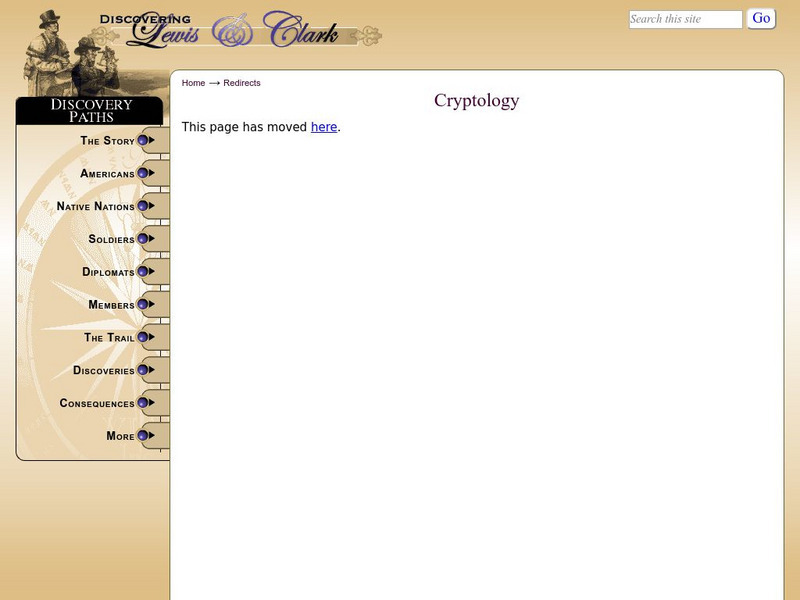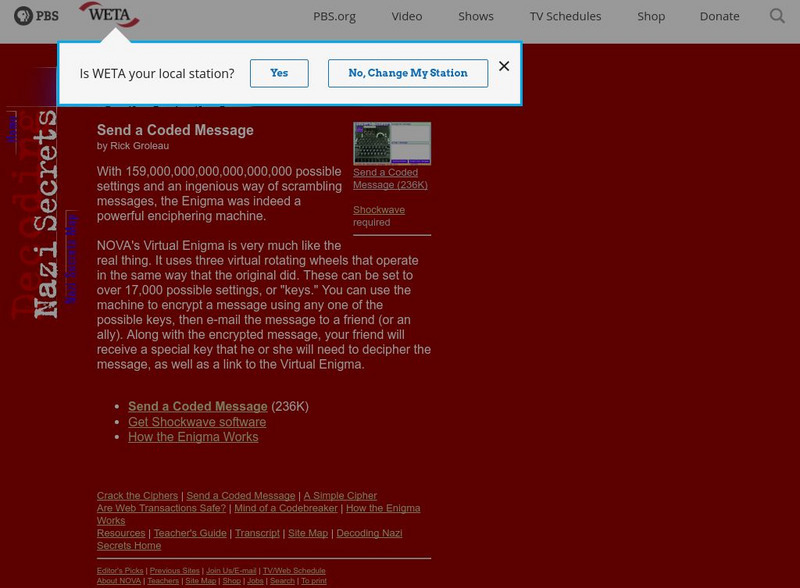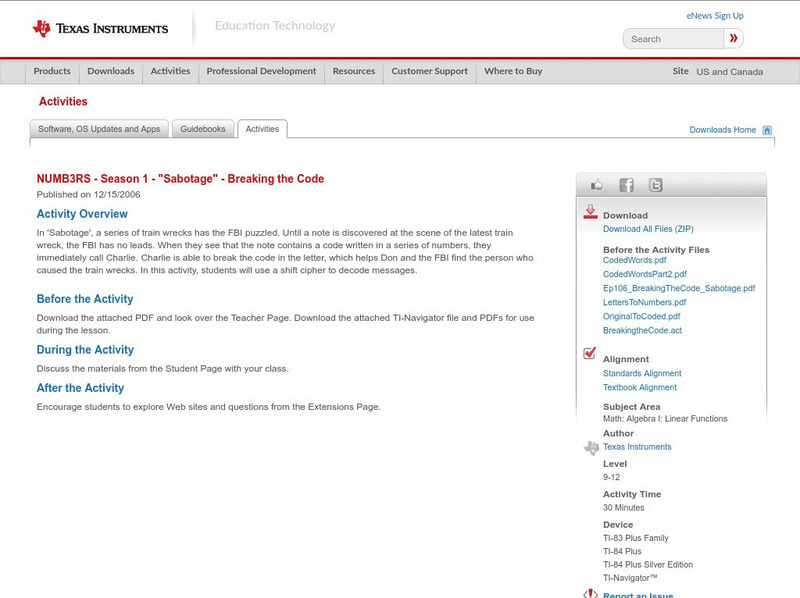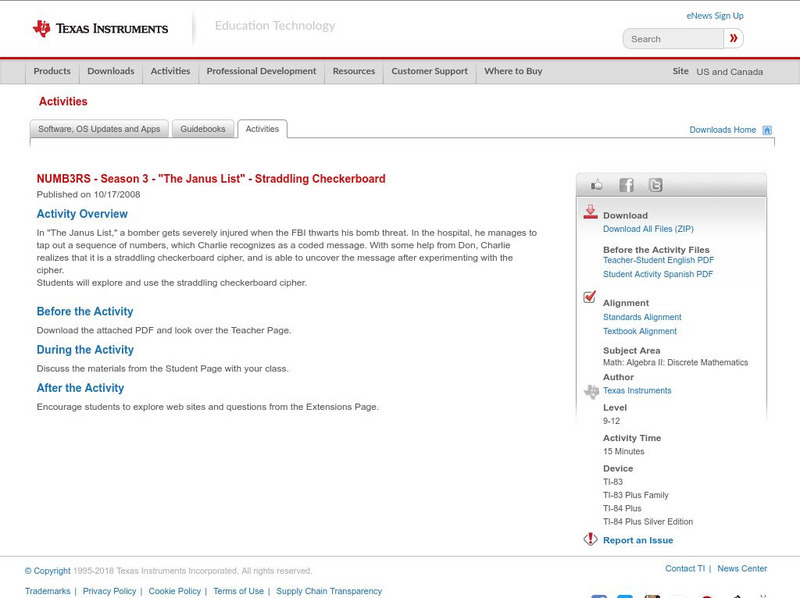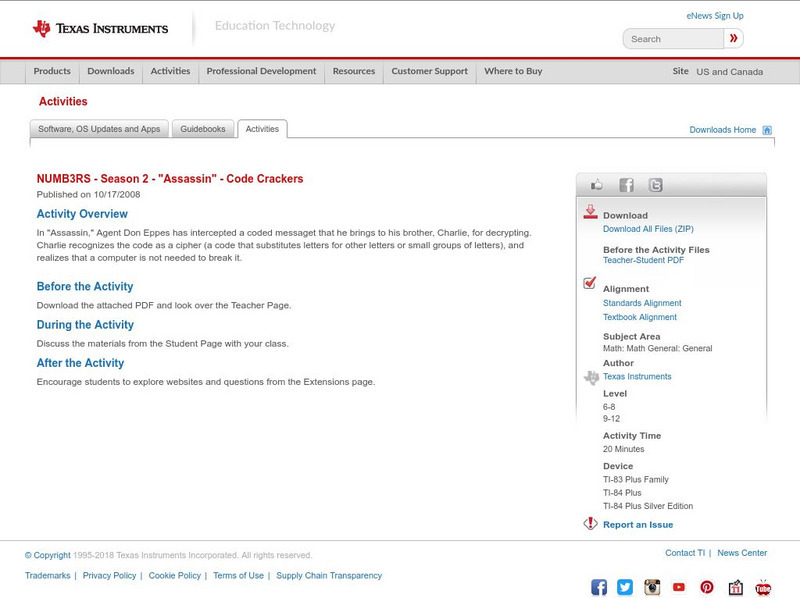Hi, what do you want to do?
Shodor Education Foundation
Caesar Cipher
Caesar ciphers hide secret missives. A simple interactive lets users encode and decode hidden messages. The cipher method here is the Caesar shift.
Institute of Electrical and Electronics Engineers
Public Keys, One Way Functions and Hard Problems
Use paint to teach about cryptography. Scholars explore public key cryptography by attempting to mix a secret color using paint. After the activity, they investigate the Diffie-Hellman method using prime numbers, exponents, and modular...
Code.org
Keys and Passwords
Scholars explore the relationship between cipher keys and passwords and as they learn more about the Vigenere cipher and continue to read from the book Blown to Bits in the seventh lesson of the series. They conduct an activity where...
Code.org
Public Key Cryptography
Investigate how public key cryptography works. Scholars continue their study of one-way functions and asymmetric keys and apply this information to public key cryptography. They use an app to explore public key cryptography and its...
Code.org
Asymmetric Keys – Cups and Beans
Beans are for more than just counting! Introduce public key cryptography with cups and beans and ask scholars to use the beans to send secret numbers. Participants learn how this activity relates to public key cryptography and...
Code.org
The Need for Encryption
Scholars investigate the need for encryption as they read a portion of the book Blown to Bits and discuss encryption techniques. They finish by attempting to decode a message written using a Caesar cipher.
Code.org
Cracking the Code
Scholars learn how to crack secret codes as they continue reading from the Blown to Bits and try to crack the random substitution cipher. They also begin learning about the Vigenere cipher.
Bowland
German or English?
Sprechen sie Deutsch? Future cryptographers must decide whether an unknown text is written in English or in German. They use provided pie charts about the frequency of words in the English and German languages to help make their decisions.
Curated OER
Basic Crypto Systems II
Ninth graders discuss the Enigma machine used during World War II. They explore the substitution cipher and variations of it. Students examine the advantages and disadvantages of this cipher. Students write a message using the code...
Discovering Lewis & Clark
Discovering Lewis & Clark: Cryptography
Learn about the origins and history of cryptology and how Thomas Jefferson urged Lewis to use a cipher to keep him informed about the progress of the expedition.
PBS
Pbs Nova: Send a Coded Message Virtual Enigma
Explore the NOVA's Virtual Enigma machine used during WWII. You can send an encrypted message to a friend along with the special key needed to decipher the message. A link is also included to the Virtual Enigma.
PBS
Pbs Nova: Decipher a Coded Message
The basic difference between a code and cipher is explained briefly. You can try to crack a simple cipher at this location.
PBS
Nova: Secrets, Lies, and Atomic Spies
The companion site to the show by the same title. Interesting site allows the reader to decipher a coded message. Information on Venona Intercepts and interviews with children of famous spies.
Google
Google for Education: Ciphering a Sentence
In this lesson, the students have a goal to map each alphabet letter to a number in the range 1-26. They use some simple rules to create this mapping and then use this mapping to encode a sentence.
Texas Instruments
Texas Instruments: Numb3 Rs: Breaking the Code
Based off of the hit television show NUMB3RS, this lesson introduced students to simple coding techniques (namely, the shift cipher). Students learn to translate codes from nonsense to English by quantifying each letter, and then...
Texas Instruments
Texas Instruments: Numb3 Rs: Message of the Bottle
Based off of the hit television show NUMB3RS, this lesson is best used to serve as a preliminary introduction to coding and encryption. Messages are ciphered by single-letter substitution, and the lesson guides students into deciphering...
Texas Instruments
Texas Instruments: Numb3 Rs: Creating Codes
Based off of the hit show NUMB3RS, this lesson focuses on getting students to create ciphering codes. These codes are made in two different ways in this lesson: once with addition and once with multiplication. Students in this lesson are...
Texas Instruments
Texas Instruments: Numb3 Rs: Straddling Checkerboard
Based off of the hit television show NUMB3RS, this lesson introduces students to a ciphering technique called the Straddling Checkerboard. In such an encryption scheme, all messages are turned into a series of numbers for transmission....
Texas Instruments
Texas Instruments: Numb3 Rs: Code Crackers
Based off of the hit television show NUMB3RS, this lesson introduced students to simple methods of cryptography, most notably the Caesar cipher. By sliding the alphabet a certain number of spaces, students code and decode messages, and...
PBS
Pbs Nova: A Simple Cipher
The difference between a code and cipher is explained. See if you can solve a simple cipher challenge at the bottom of the page.
Shodor Education Foundation
Shodor Interactivate: Spy Game
Students will learn about modular arithmetic in order to decipher encrypted messages.














